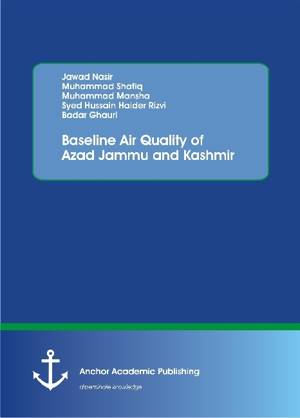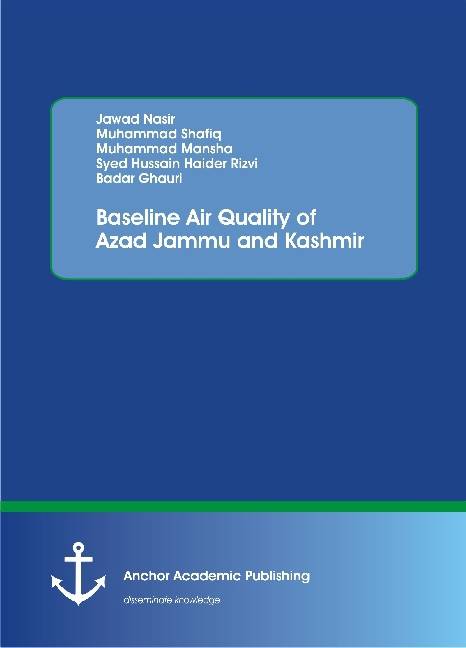
- Afhalen na 1 uur in een winkel met voorraad
- Gratis thuislevering in België vanaf € 30
- Ruim aanbod met 7 miljoen producten
- Afhalen na 1 uur in een winkel met voorraad
- Gratis thuislevering in België vanaf € 30
- Ruim aanbod met 7 miljoen producten
Zoeken
Baseline Air Quality of Azad Jammu and Kashmir
Syed Hussain Haider Rizvi, Muhammad Shafiq, Jawad Nasir
Paperback | Engels
€ 44,45
+ 88 punten
Omschrijving
The Azad Jammu and Kashmir (AJK) environmental profiling project has been completed aiming at a healthy environment for the citizens of AJK. The Environmental Protection Agency of AJK has been providing the logistical support and moblity etc. throughout the sampling period. The present study has a very strong focus on "Indoor Air Quality Monitoring". The monitoring has been performed at the selected locations of Muzaffarabad, Mirpur and Bhimber in residential, commercial and industrial areas for ambient air. Indoor air quality has been measured in schools, houses, hospitals and industrial units of different locations of Muzaffarabad, Mirpur and Bhimber. Geographically, the northern part of AJK encompasses the lower part of the Himalayas. Fertile, green, mountainous valleys are characteristic of Azad Kashmir's geography, making it one of the most beautiful regions on the subcontinent. The southern parts of Azad Kashmir including Bhimber, Mirpur and Kotli districts have extremely hot weather in summers and moderate cold weather in winters. It receives rains mostly in monsoon weather. Snow fall also occurs there in December and January. This region receives rainfall in both winters and summers of the order of more than 1400 mm, with the highest average near Muzaffarabad. During summer, monsoon floods of the Jhelum and Leepa rivers are common.
Specificaties
Betrokkenen
- Auteur(s):
- Uitgeverij:
Inhoud
- Aantal bladzijden:
- 84
- Taal:
- Engels
Eigenschappen
- Productcode (EAN):
- 9783960671503
- Verschijningsdatum:
- 15/06/2017
- Uitvoering:
- Paperback
- Formaat:
- Trade paperback (VS)
- Afmetingen:
- 178 mm x 254 mm
- Gewicht:
- 163 g

Alleen bij Standaard Boekhandel
+ 88 punten op je klantenkaart van Standaard Boekhandel
Beoordelingen
We publiceren alleen reviews die voldoen aan de voorwaarden voor reviews. Bekijk onze voorwaarden voor reviews.











